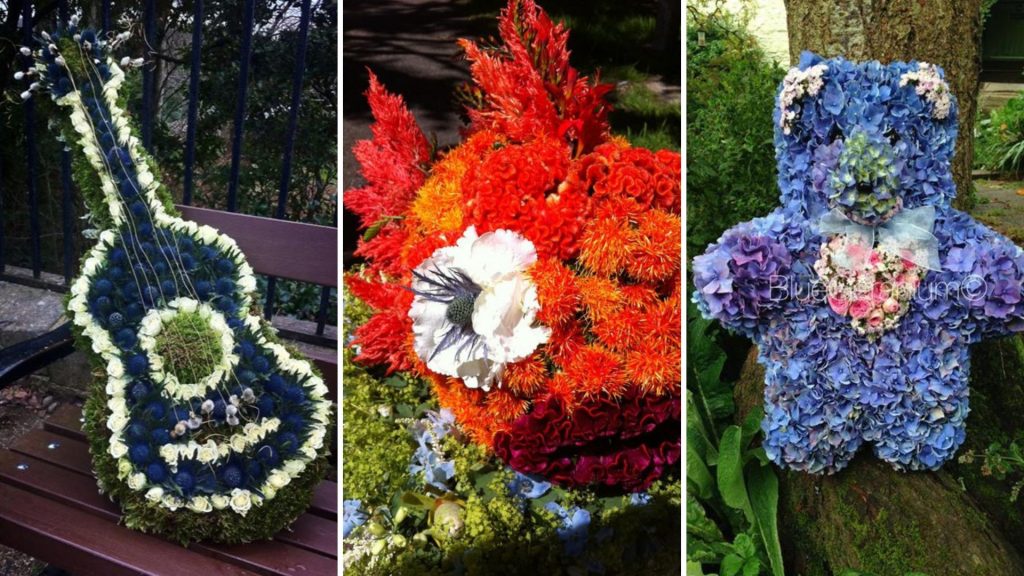The Beauty of Flowers for Funerals
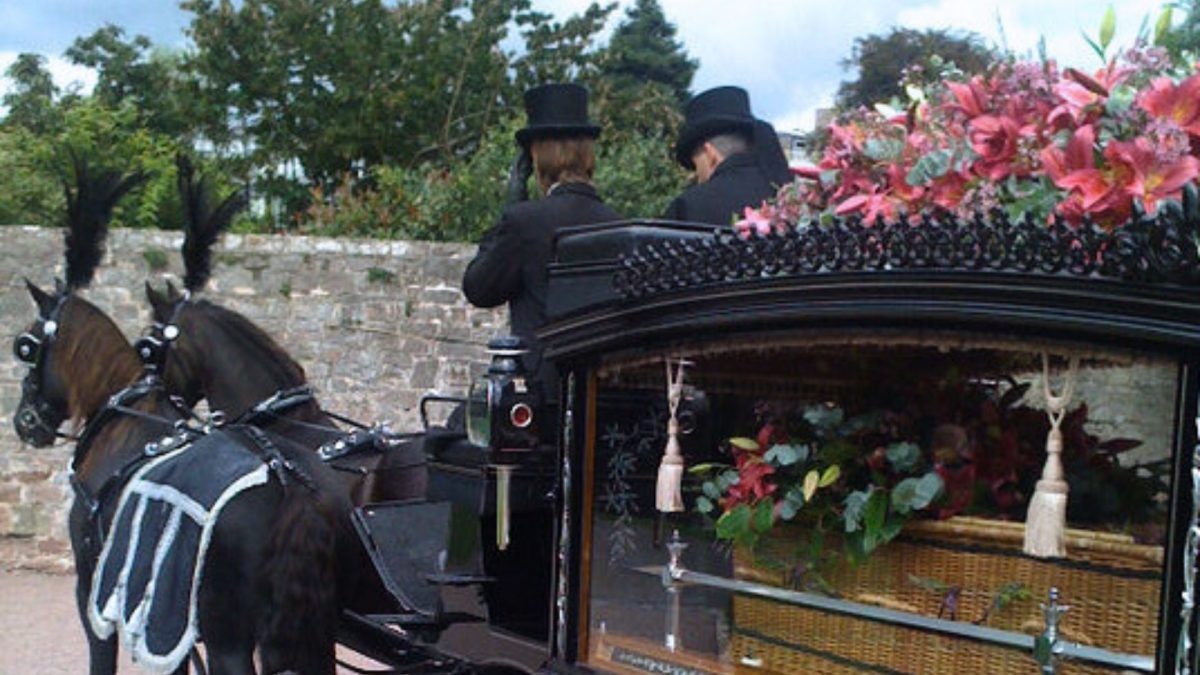
For centuries, across cultures, the uplifting simplicity and beauty of flowers at a time of grief has been of great comfort. The strength of their beauty has the power to convey feelings that cannot be spoken at a time of emotional distress. Flowers are a symbol of the fragility of our life on earth and a poignant reminder of our interrelationship with nature. A single stem, or a simple posy gathered by a child and placed on top of the coffin has a special eloquence.
Flowers are a potent symbol because they connect us to the natural life cycle but we forfeit their capacity to inspire and comfort us, when all year round, the same flower pieces using a restricted variety of flowers blind us to the beauty and freshness of seasonal flowers and personally crafted tributes.
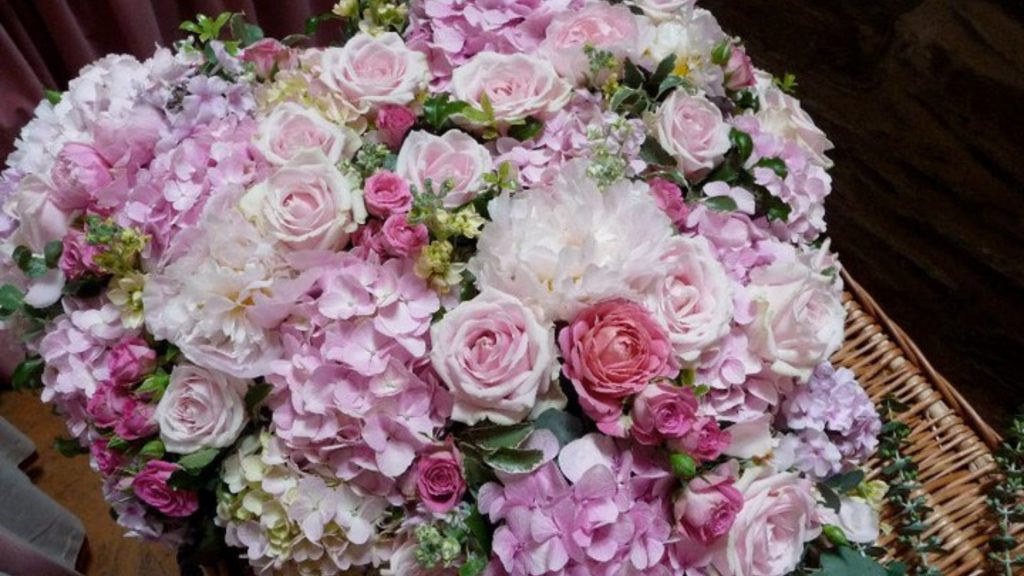
Arrangements can vary greatly if not choosing from a catalogue. Snowdrops and narcissi set in a woodland scene of catkins and pussy willow in spring; a mass of colourful full-blown scented roses with herbs in summer; an abundance of fruits and flowers, blackberries, crab apples, echinacea in autumn; or the exotic blooms of amaryllis with winter berries and foliage in the colder months. When a devoted organic vegetable grower died, his relatives requested an arrangements of vegetables to place on top of the coffin. It looked beautiful.
The important point is that the flowers say something about the person who has died – their loves, their personality, their origins. The coffin flowers can be formally arranged, or can be a much looser arrangement, perhaps two hand ties woven together to make a single spray. If the flowers aren’t all clipped short they can be used to make a number of posies and hand ties for people to take with them. It is so sad when the flowers just go to waste. Hospitals won’t accept them anymore and flowers that were obviously from a funeral are not much comfort to those in hospices and nursing homes.
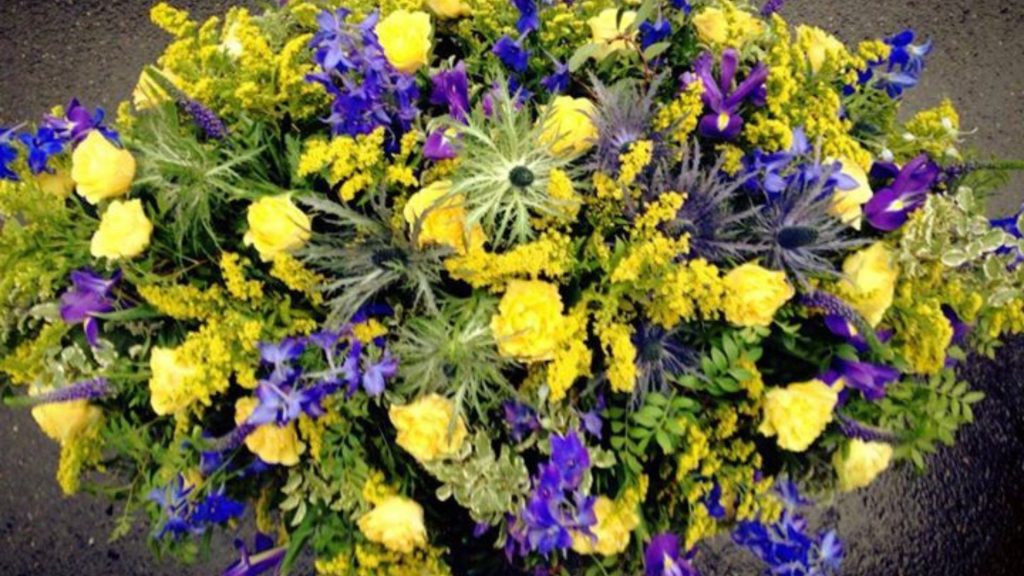
If flowers are important to you, try to find a florist who is sympathetic and happy to listen to you rather than one who simply encourages you to choose flowers from a catalogue. Say right from the beginning you would like something individual or creative, the colours you want, what you want the flowers to convey.
Flowers can be chosen to be more eco-friendly. There are lots of people now growing flowers seasonally and locally. In the right season you can use flowers from the garden. If they are handled carefully funeral flowers do not need cellophane. There are ecological alternatives to Oasis.
It is lovely to organise and arrange as many of the flowers as you feel able to.
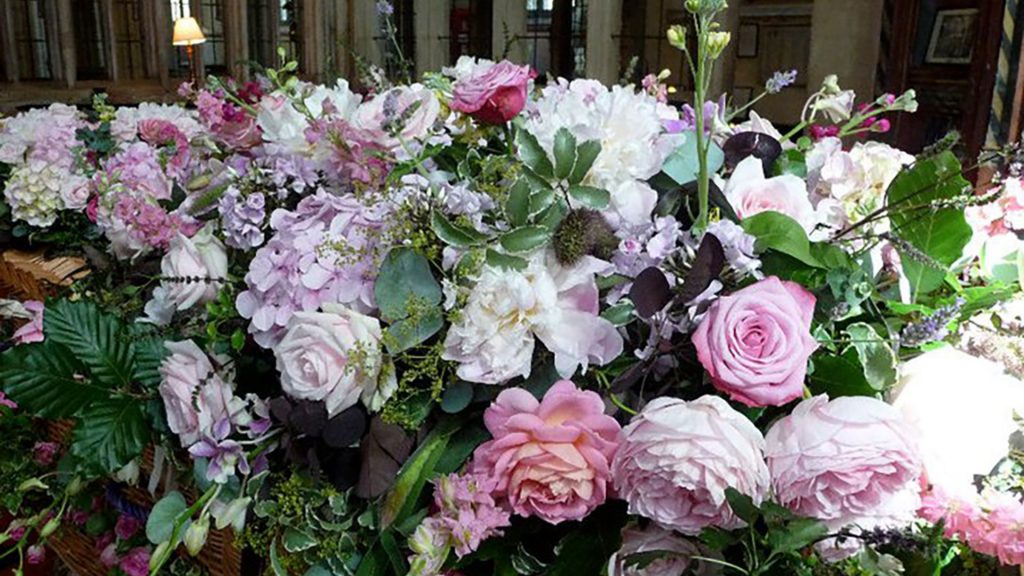
• a good way to involve the family is to form a group to organise the flowers the day before the funeral. This brings people together to chat, tell stories and share memories
• using a mixture of flowers from the florist with garden flowers and foliage helps you with colour and impact
• pick garden flowers early in the morning. Leave to drink in a bucket of water in a cool shady place for twenty-four hours and they will remain fresh. Wild flowers are more delicate
• the flower pieces do not have to look perfect. You will foster a sense of connection to the person if you do what feels natural to you and gives you pleasure
• flat-backed sprays of flowers are easy to carry and put into position
Often people respond very positively to the chance of moving close to the coffin, and if it is a woven coffin, bamboo or willow for example, they can place a flower stem into the weave. Encouraging people to gather together like this helps to break the formality of the occasion and brings feelings of comfort and inclusivity for those who want to participate.
Roses, tea tree, camellia, eryngium thistle, heather and herbs are good choices because they have woody stems which are not too thick.
The weave of a coffin is close and stiff so flowers with thick fleshy stems are not suitable. These types of flowers are better placed on top.
